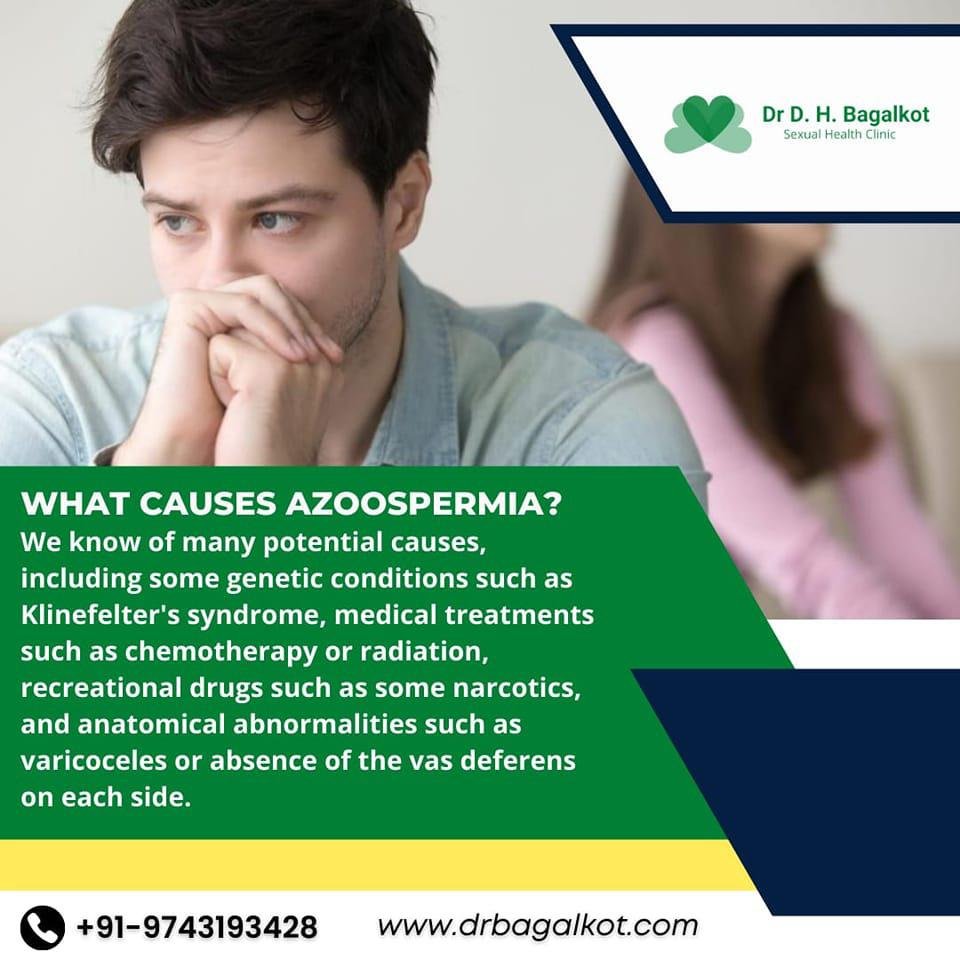Azoozpermia

Azoospermia is a condition characterized by the complete absence of sperm in a man’s ejaculate. It is a significant factor contributing to male infertility and affects approximately 1% of the male population. Understanding azoospermia is crucial for couples struggling with fertility issues, as it plays a pivotal role in the diagnosis and treatment of male infertility.
Obstructive Azoospermia: In this type, a physical obstruction prevents the sperm from reaching the ejaculate. Common causes include previous surgeries, infections, or congenital anomalies in the reproductive tract. Obstructive azoospermia is often treatable through surgical intervention to remove the blockage or create a new pathway for sperm Non-Obstructive Azoospermia: This type is more complex and results from a problem with sperm production within the testicles. It can be due to genetic factors, hormonal imbalances, or other underlying conditions.
Non-obstructive azoospermia can be more challenging to treat, and fertility options may include sperm retrieval techniques like testicular sperm extraction (TESE) followed by assisted reproductive technologies such as in vitro fertilization (IVF) or intracytoplasmic sperm injection (ICSI).

Azoospermia is a medical condition characterized by the complete absence of sperm in a man’s ejaculate (semen). It is a significant cause of male infertility and can be classified into two main types:
Obstructive Azoospermia: This type of azoospermia occurs when there is a physical blockage or obstruction in the male reproductive tract that prevents sperm from reaching the ejaculate. Common causes include congenital conditions (present from birth), infections, previous surgeries, or a vasectomy reversal that did not restore sperm flow. In cases of obstructive azoospermia, sperm are typically produced in the testes but cannot travel through the reproductive tract.
Non-obstructive Azoospermia: Non-obstructive azoospermia occurs when the testes fail to produce or release sperm, resulting in an absence of sperm in the ejaculate. This condition may be due to various underlying causes, including hormonal imbalances, genetic factors, testicular injury, or certain medical treatments such as chemotherapy. It is often more challenging to treat compared to obstructive azoospermia.
Diagnosing the specific type of azoospermia typically involves a thorough evaluation by a urologist or fertility specialist. Diagnostic tests may include semen analysis, blood hormone tests, genetic testing, and imaging studies such as testicular ultrasound.
Treatment options for azoospermia depend on the underlying cause:
- Obstructive Azoospermia: In some cases, surgical procedures can be performed to remove blockages or restore sperm flow. Common procedures include vasectomy reversal or surgical correction of congenital obstructions.
- Non-obstructive Azoospermia: Treatment options for non-obstructive azoospermia may include addressing underlying hormonal imbalances, lifestyle changes, or medications to stimulate sperm production. In more complex cases, assisted reproductive techniques such as testicular sperm extraction (TESE) or microdissection testicular sperm extraction (micro-TESE) may be considered to retrieve sperm directly from the testes for use in fertility treatments like in vitro fertilization (IVF) or intracytoplasmic sperm injection (ICSI).
